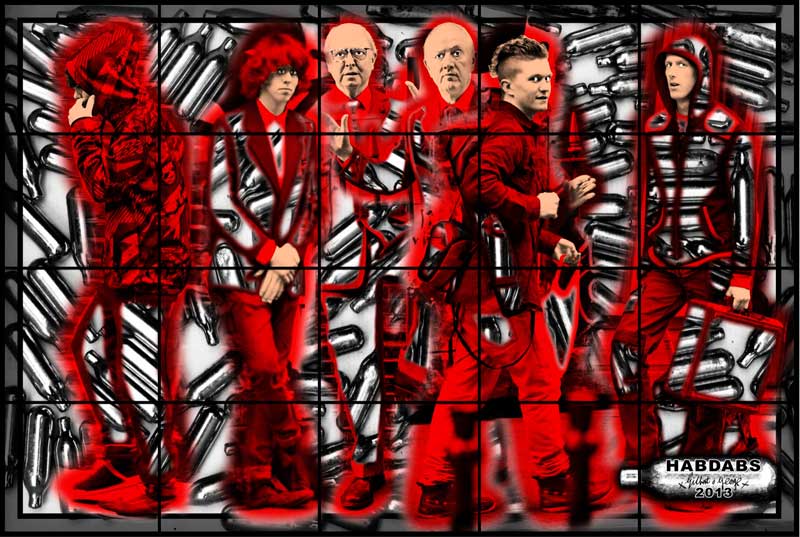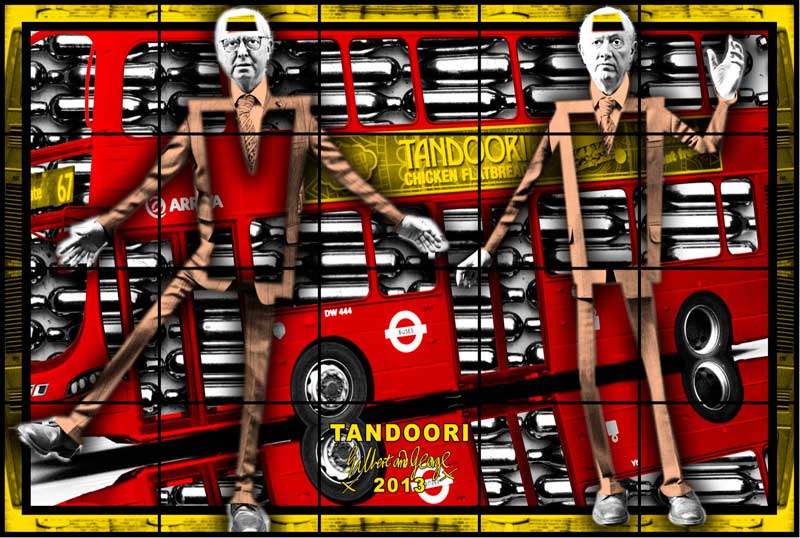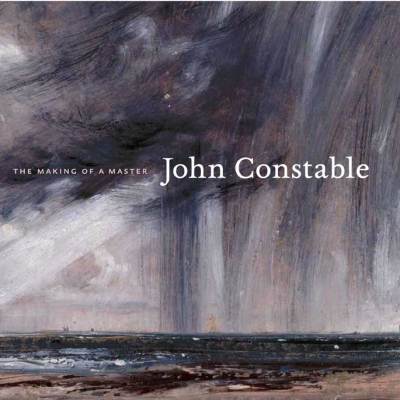Gilbert and George have placed themselves at the centre of their art since they met in 1967. Their new series of photo-collages at Galerie Thaddaeus Ropac Pantin, ‘Scapegoat pictures for Paris’ (following ‘Scapegoating pictures for London’ at White Cube Bermondsey) sees the duo fragmented, distorted and melding into the cityscapes around them. An urban cacophony of youth, pavements, buses, hooded figures, niqabs, mannequins, railings, trees and – everywhere – threatening-looking canisters.
The canisters may look like bombs but are in fact empty nitrous oxide canisters. Connoisseurs also know them as laughing gas, or even, ‘hippy crack, whippets’ adds George, who at 72 retains a good grasp on street slang. Gilbert and George gathered the empty canisters on their early morning strolls through the detritus of other people’s nights out.
Read more: Gilbert & George Interview: July/August Apollo
The nitrous oxide canisters change size and texture from picture to picture. In Boyhood, a youth and his mirror image create a vaguely crucifix-like shape on a background of shiny canisters (in the background Gilbert and George appear to have bodies made up of canisters); in Zam Zam larger, more weathered canisters frame a woman in a niqab, holding her phone to her ear and a designer handbag across her arm (Gilbert and George on either side, melting into a jumble of street signs and bricks); in Gaseous, large canisters meld into the disembodied forms of Gilbert and George and a brightly lit tree in full blossom.
The idea of laughing gas, the fractured visual elements and the canisters themselves create a tension between euphoria and paranoia. The visual impact of the pictures accentuates this skittish energy. Their huge scale and limited colour palette (black, white and red for the most part) are striking – even in the immense space at Ropac’s Pantin gallery – and uncomfortable.
Gilbert and George don’t want to make us feel comfortable. Now in their eighth decade, the duo have not let up in making art that challenges, and often seeks to offend. The Scapegoating Pictures evoke issues of religious difference, surveillance, globalisation and terrorism, but it is not clear who they are trying to offend. That is perhaps the point. ‘We want our art to bring out the Bigot from inside the Liberal and conversely to bring out the Liberal from inside the Bigot’ says George. The pair are neither encouraging nor condemning any particular cause, but instead articulating the fears and anxieties of the urban fabric around them.
Michael Bracewell, novelist and cultural critic, describes the ‘immediate and urgent atmosphere’ of the Scapegoating Pictures. They ‘show a world on the brink, a place that’s very volatile’. This urgency is particularly palpable in Britain’s current political climate. Moreover the imagery is very London-centric (place has always been very important to Gilbert and George who have spent their life together in London’s East End).
Will the imagery of the Scapegoating Pictures have the same impact on a French audience? ‘It’s a townscape’, says Gilbert, ‘it’s London but it could be anywhere.’ The red buses and brick buildings may be typically London but the anxieties are as relevant in Paris as they are in the UK capital. ‘Scapegoating’ says Gilbert, ‘is a modern term where everyone is blaming each other and no one wants to accept fear.’ When put like this, the Scapegoating Pictures can have a resonance even beyond Paris.
‘Scapegoat Pictures for Paris’ is at Galerie Thaddaeus Ropac (Pantin) until 15 November.
Related Articles:
Gilbert & George Interview: July/August Apollo (Martin Gayford)
Cover Story: July/August Apollo (Thomas Marks)





